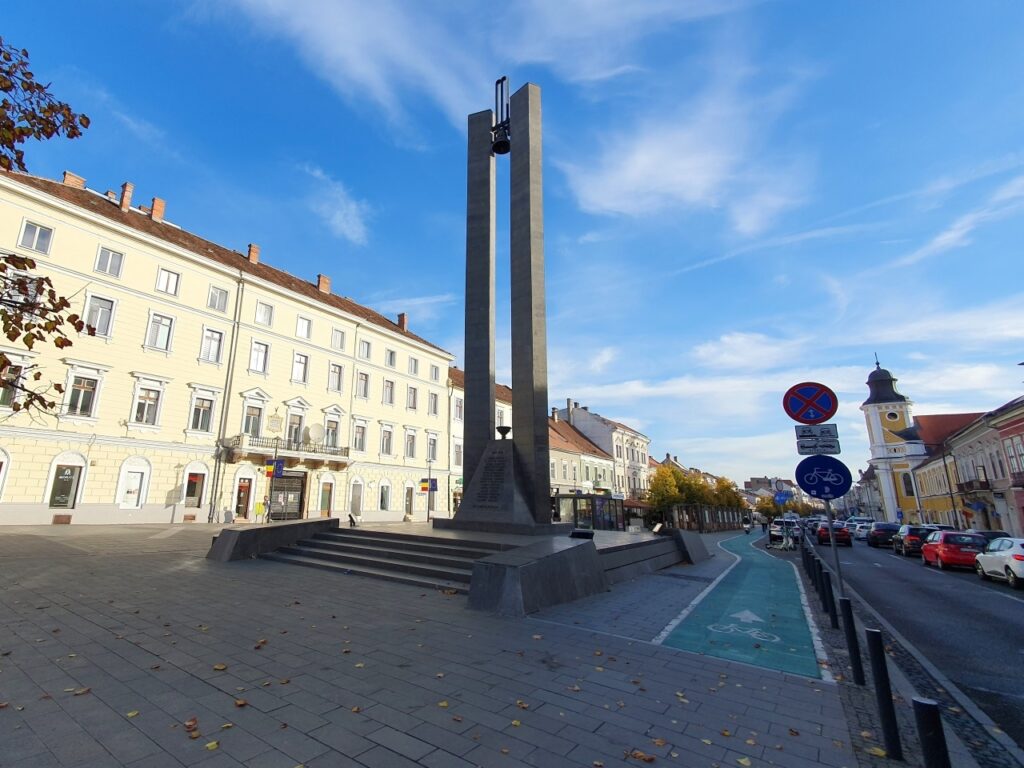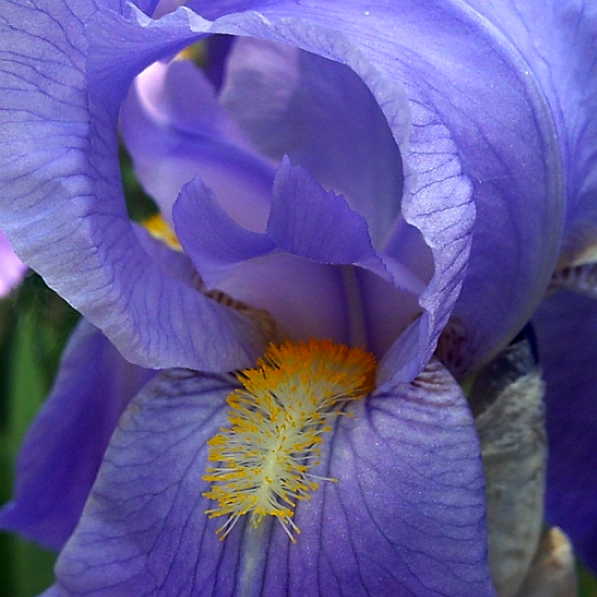In this article we continue our journey through the old center of Cluj, mainly between the 3 cathedrals of the city, the Roman-Catholic, Greek-Catholic and Orthodox one. We begin from the north-eastern corner of Unirii (Unity’s or Union’s) Square.
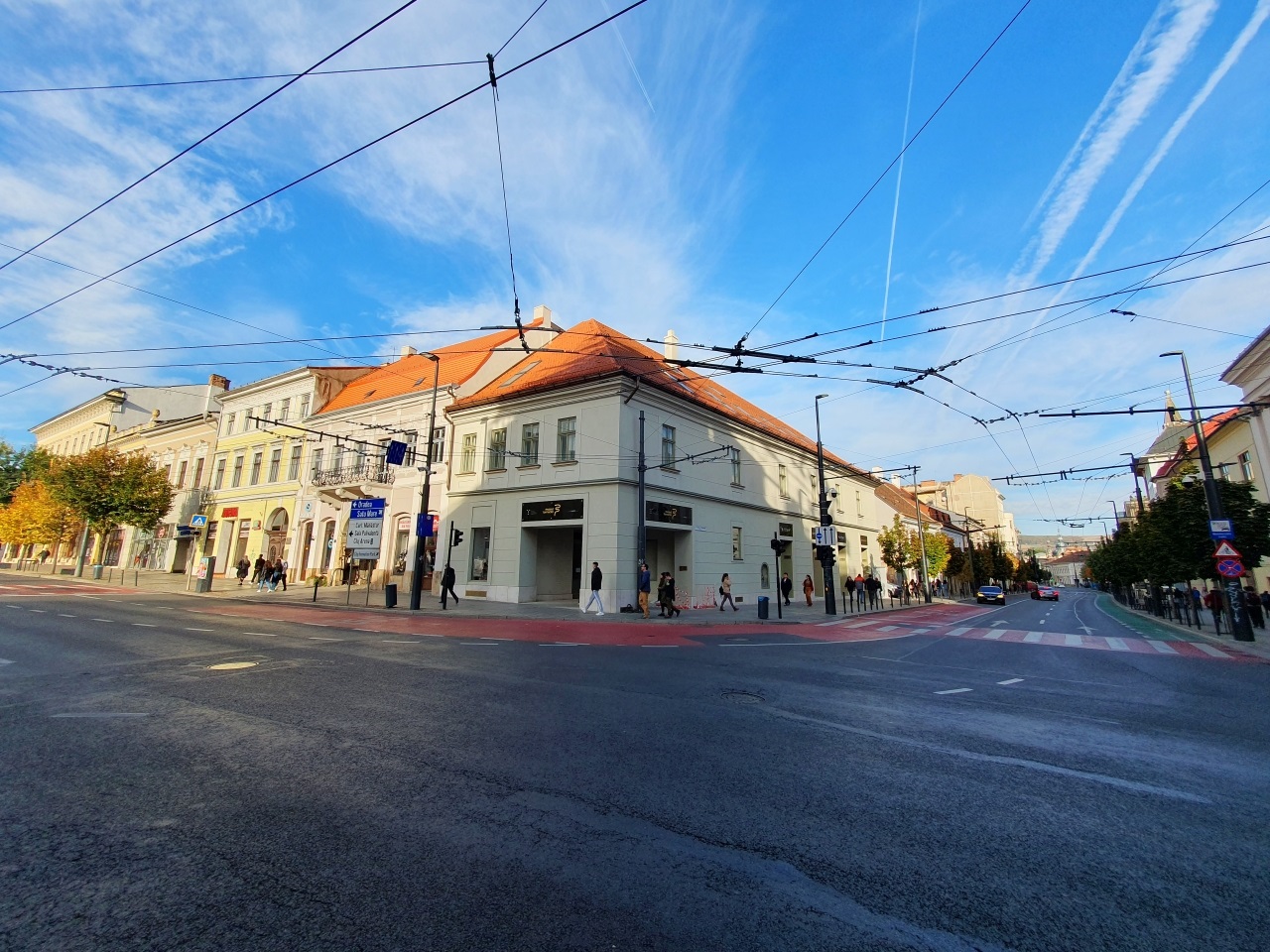
Here is the crossroad between the 21 December 1989 street (from left to right) and Horea street (originating in the right side of the image). The central house is Mauksch-Hintz House, also the Museum of Pharmacy History, built in late 15th century. The second one (behind the blue street sign) is the Filstich-Kemény House, built in the 16th century. Behind these buildings are the remains of the Truncated Tower, former dungeon of the town, built in the 13th century.

Looking eastwards (while standing next to the wall of former Central Hotel (nowadays Melody), we can see the Evanghelical Lutheran Church, built in 1816. On the fronton it simply displays one word: Pietati.
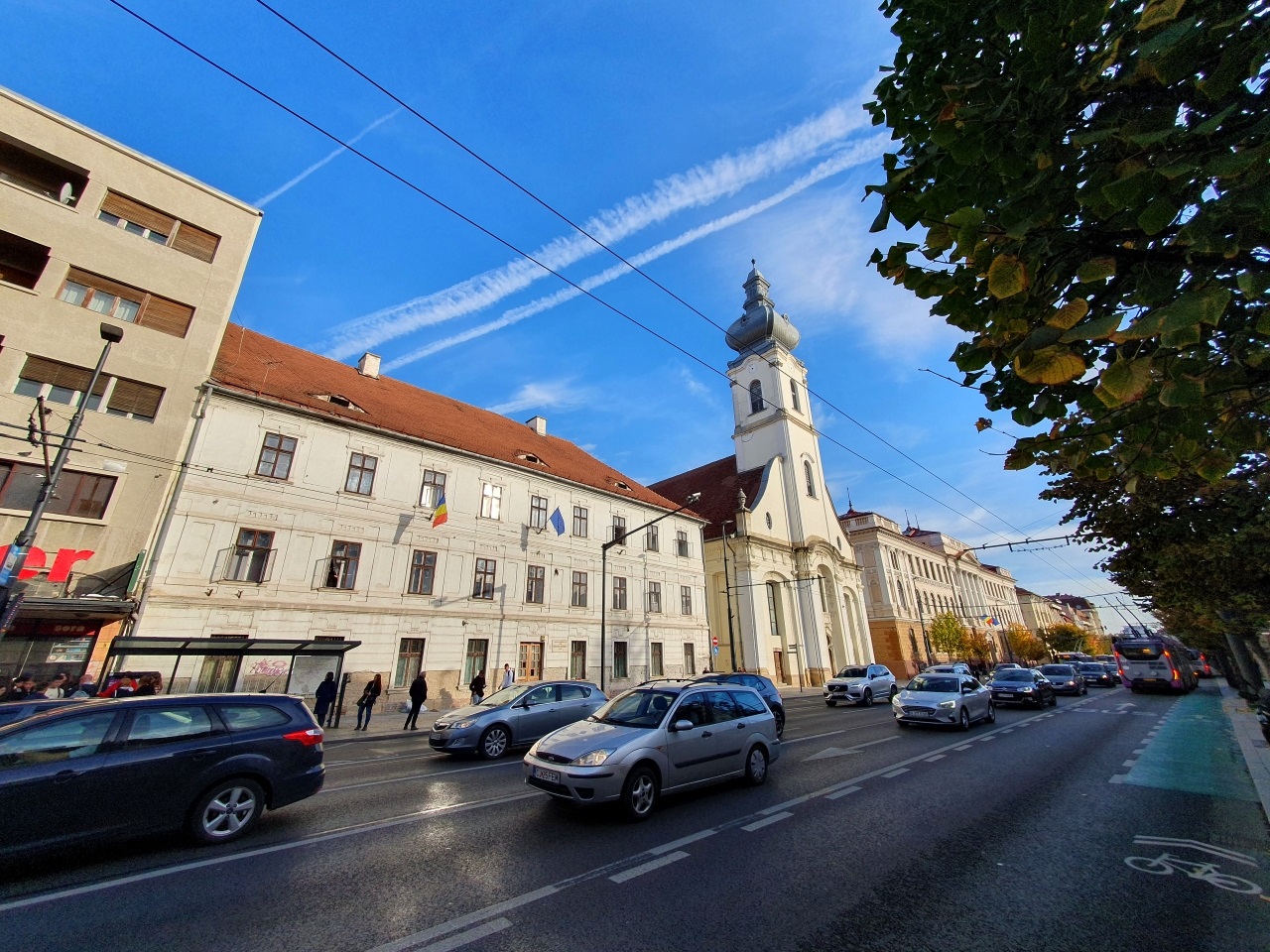
Continuing to the east, we encounter the Brassai Sámuel High School (to the left), the Old Unitarian High School built around 1718. Farther to the right it’s another church, the Unitarian church, built in 1792.
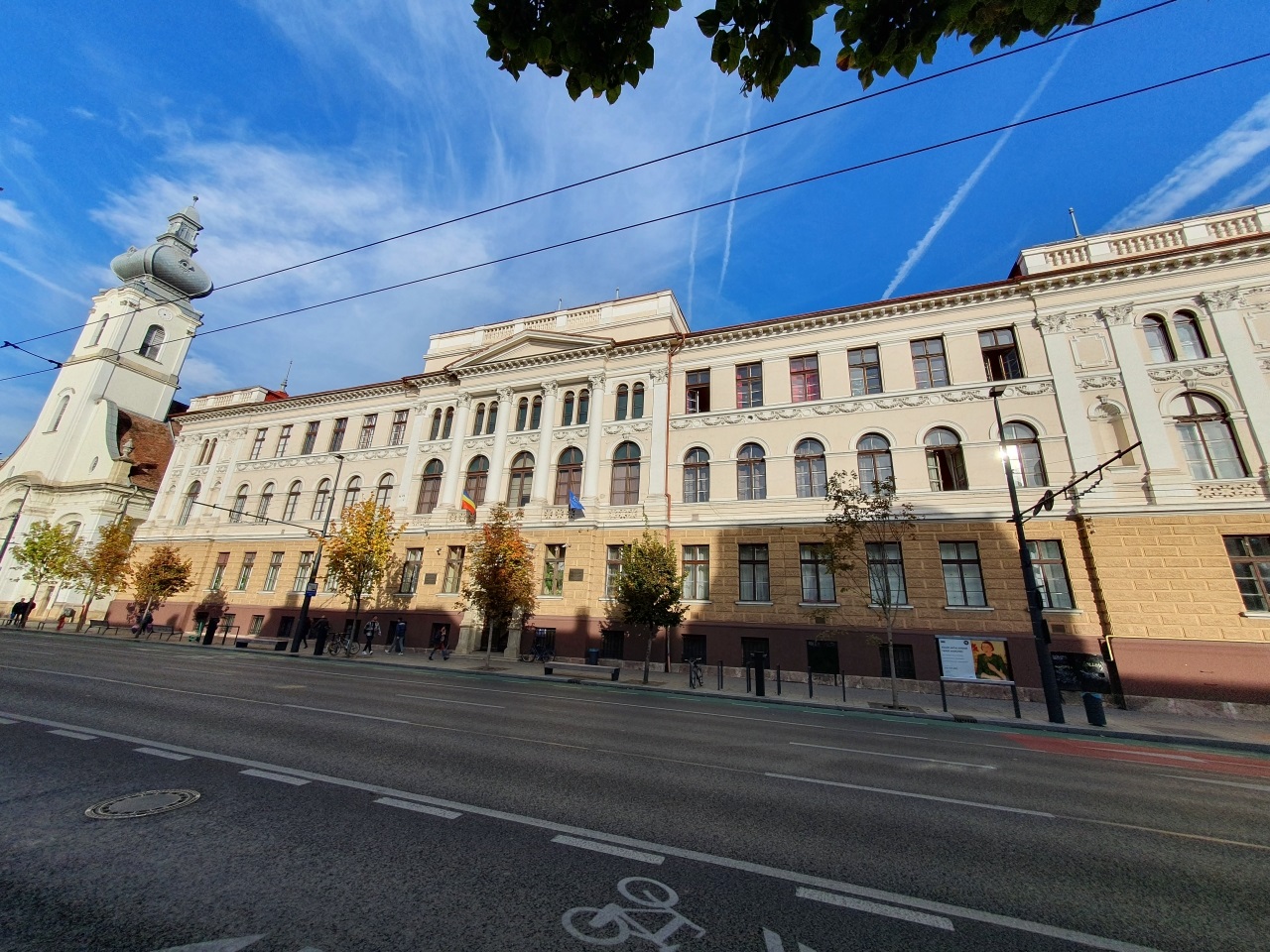
Next to the church is the János Zsigmond Unitarian High School, built in 1899.
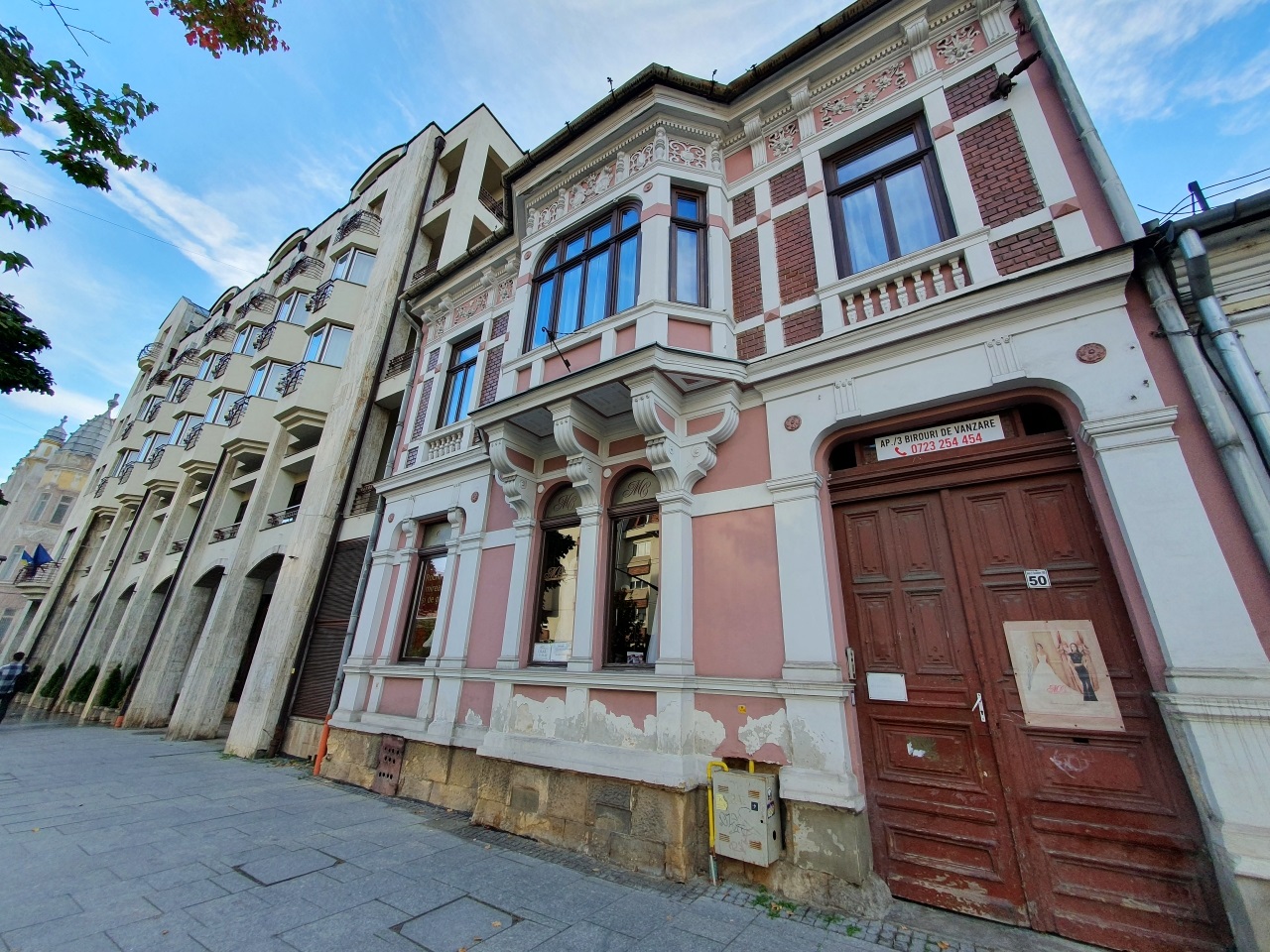
The Hory House, built sometime before 1880, displaying some eclectic elements. To the left is the more modern Victoria Hotel.
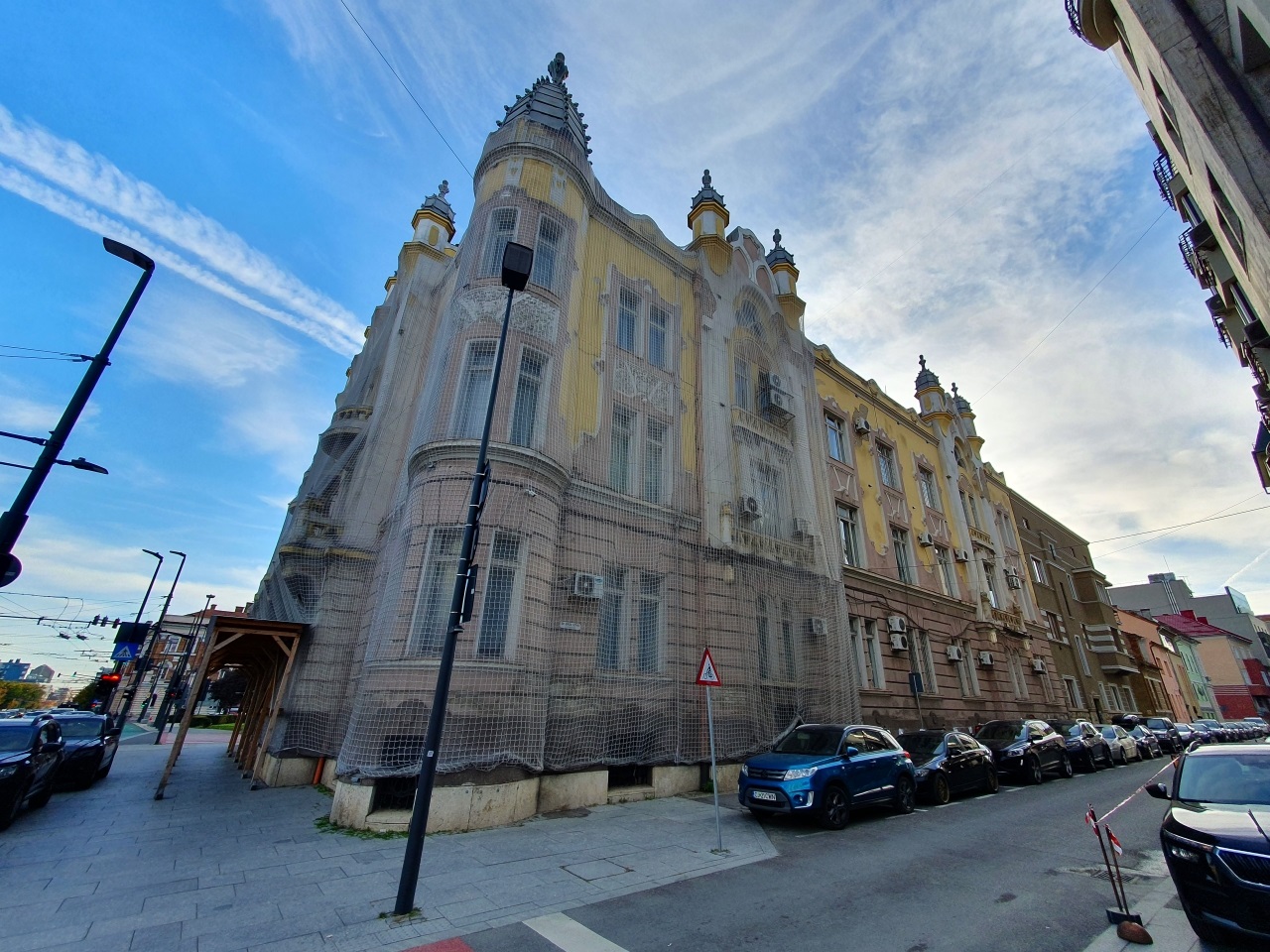
The following palace was under renovation (as some of the buildings that will and did not appear in my articles). This is the former Chamber of Commerce and Industry, built in 1910 in an eclectic style with Gothic, Renaissance and Art Nouveau elements. Today is… the seat of the Prefecture of Cluj County.
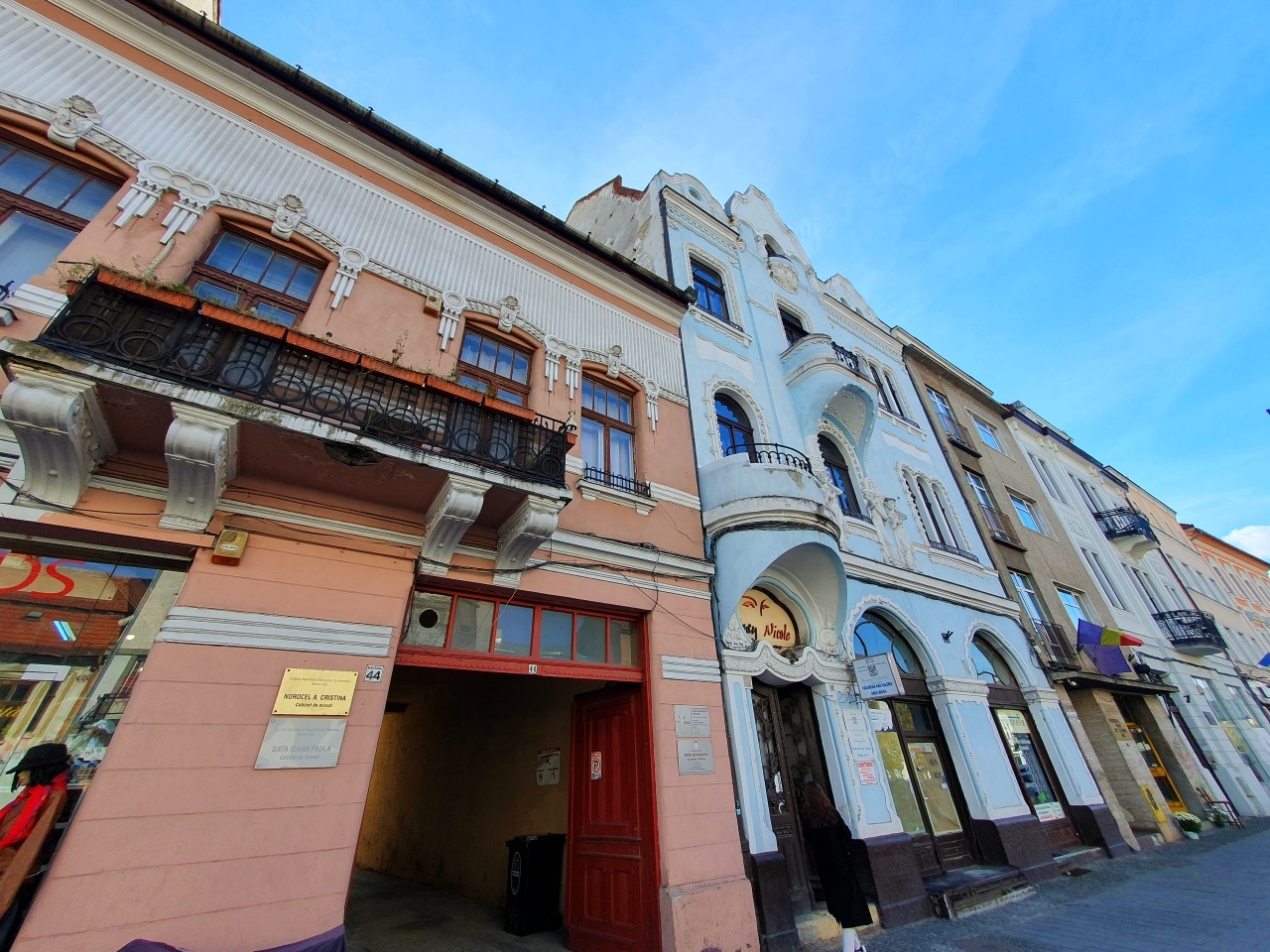
We cross fast the Opera Square, leaving it for a future article, and enter Eroilor Street. The blue building is the Pap House, built in the early 1910s in the Art Nouveau style. Next to it it’s the Wertheimer House.
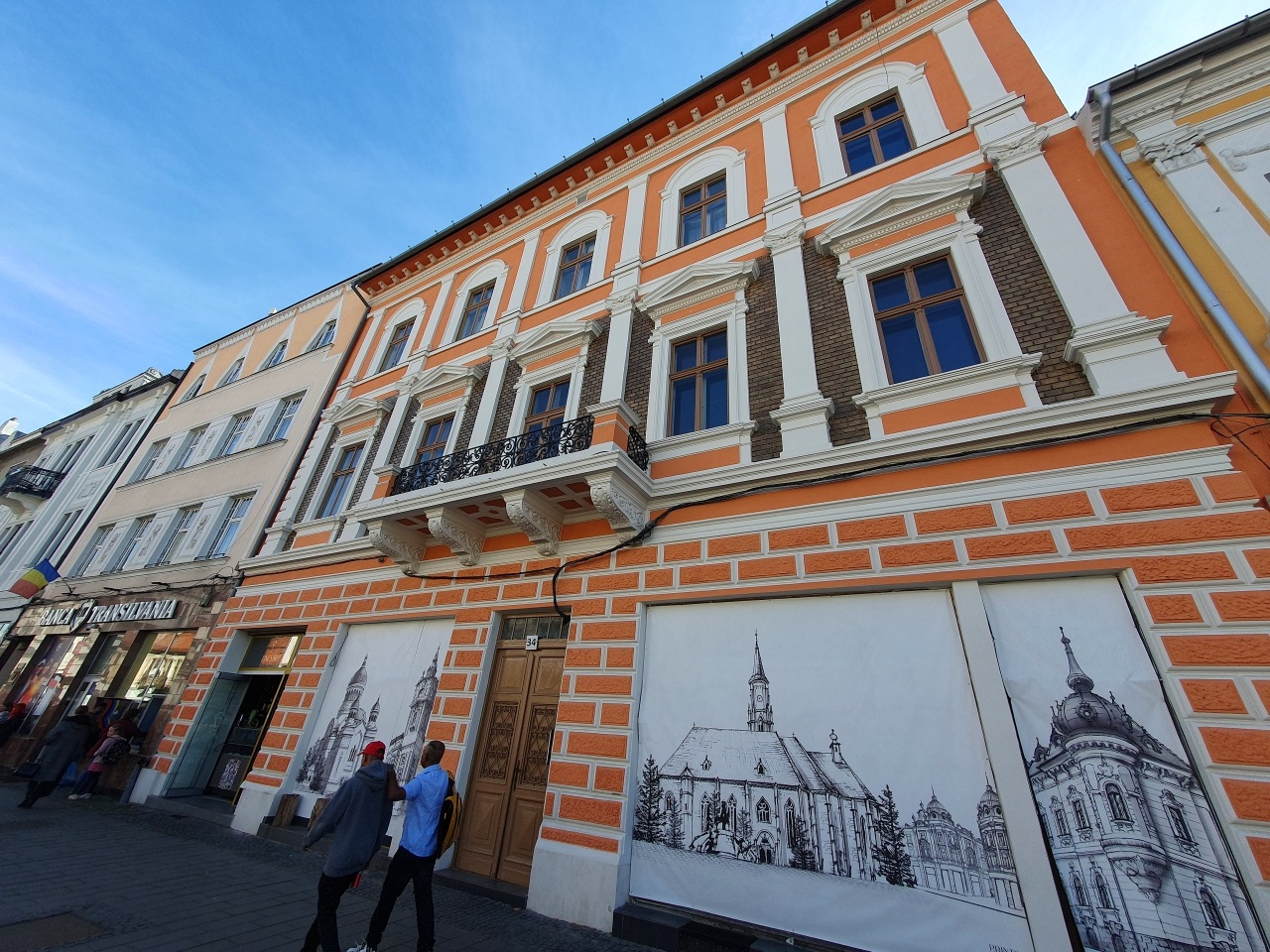
Some buildings are recently renovated.
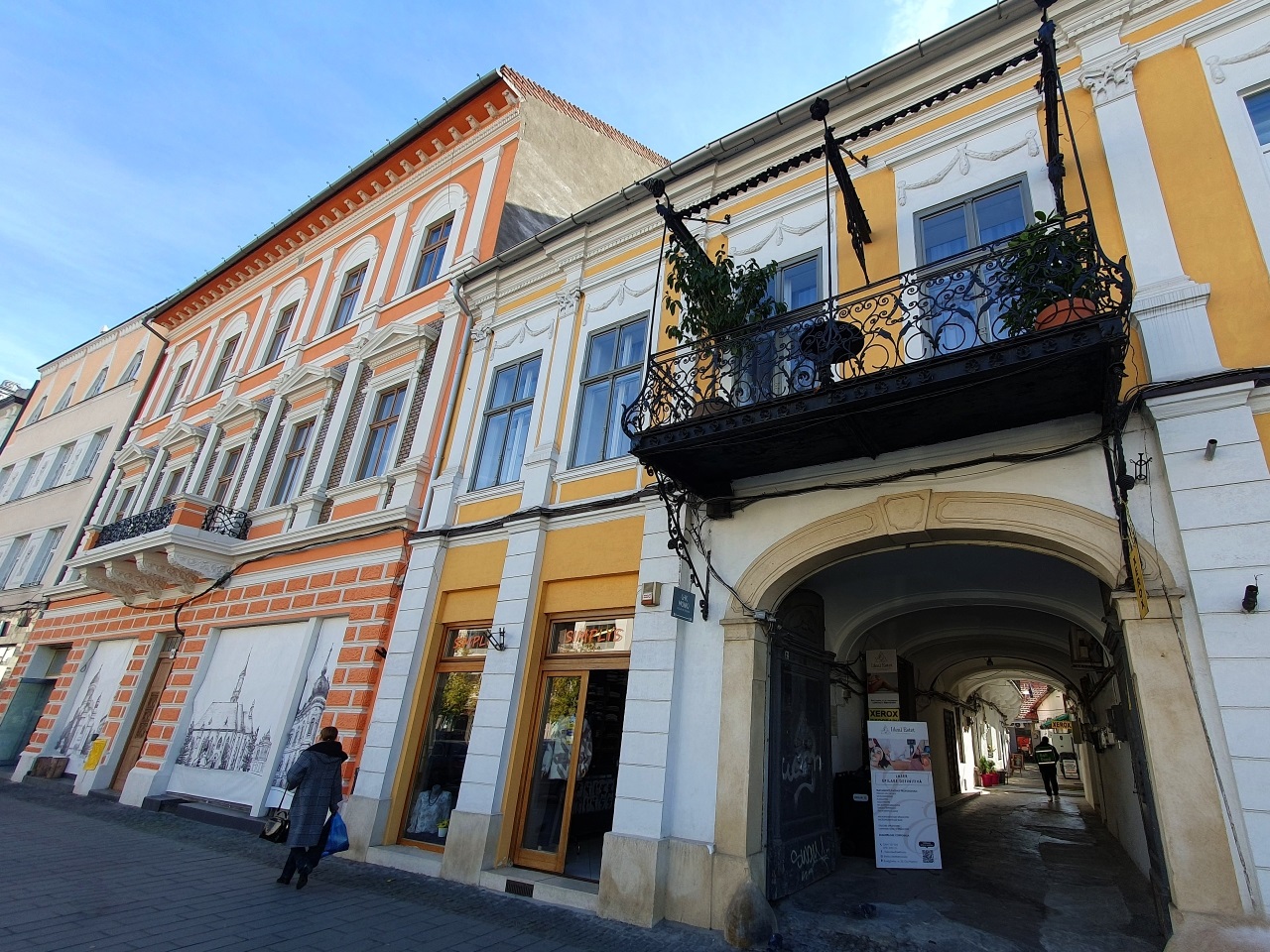
The house to the right is the Little Bánffy House, built in the 19th century.

A view on the opposite side of the street.
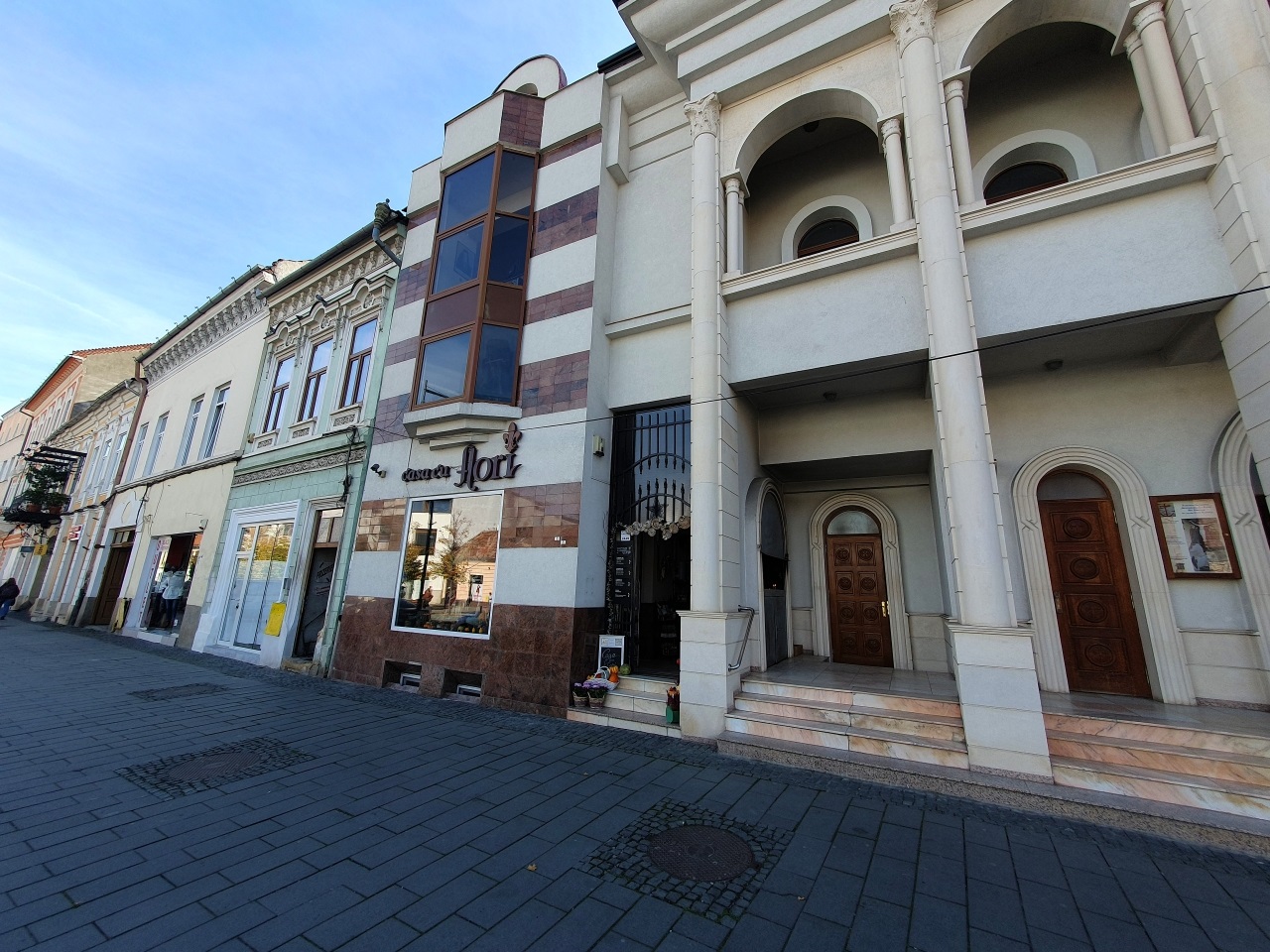
To the left, Pattantyús House and Váradi House. To the right is a newly built Romanian Orthodox Church .
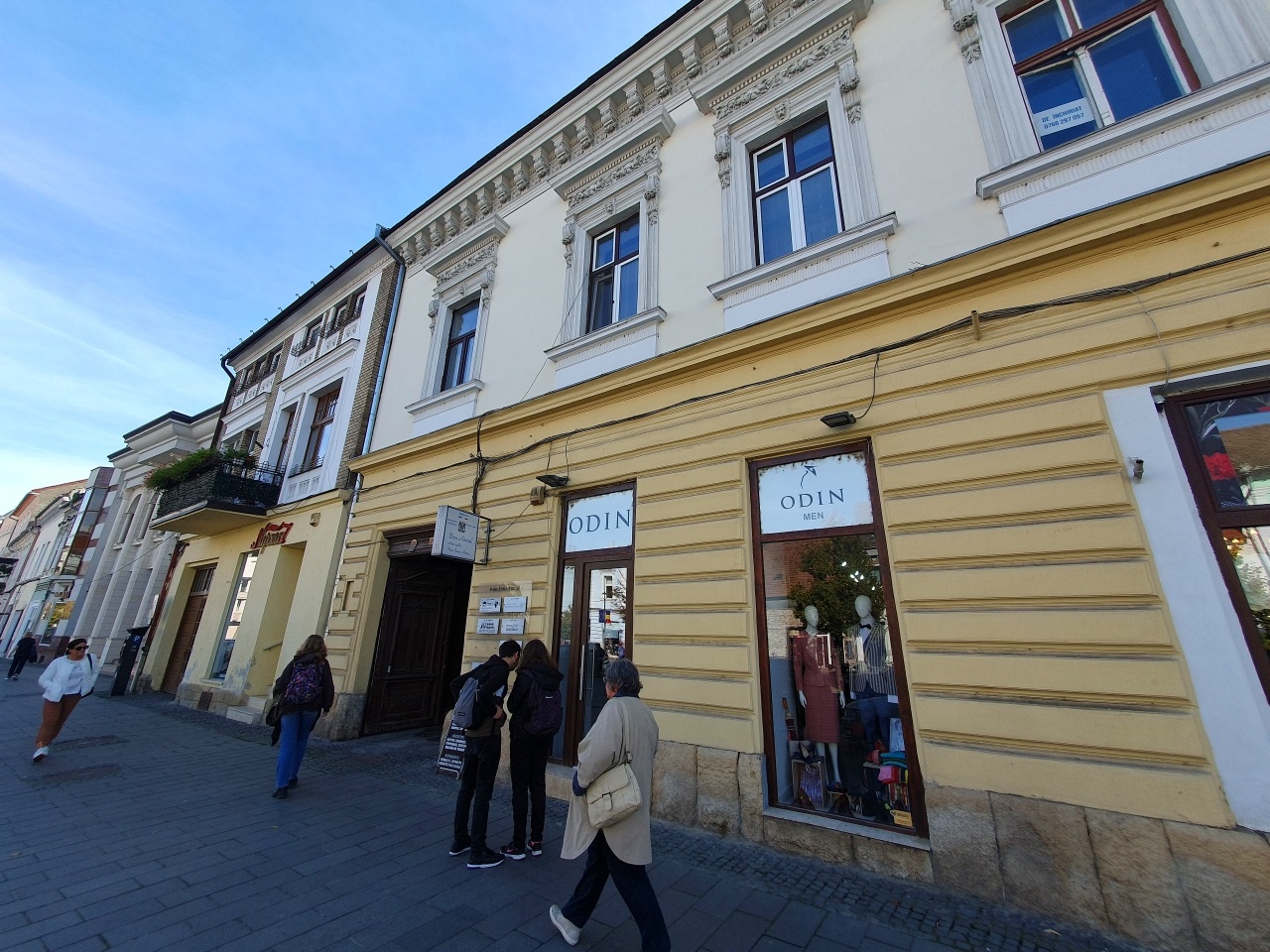
The Katona and Kemény houses.
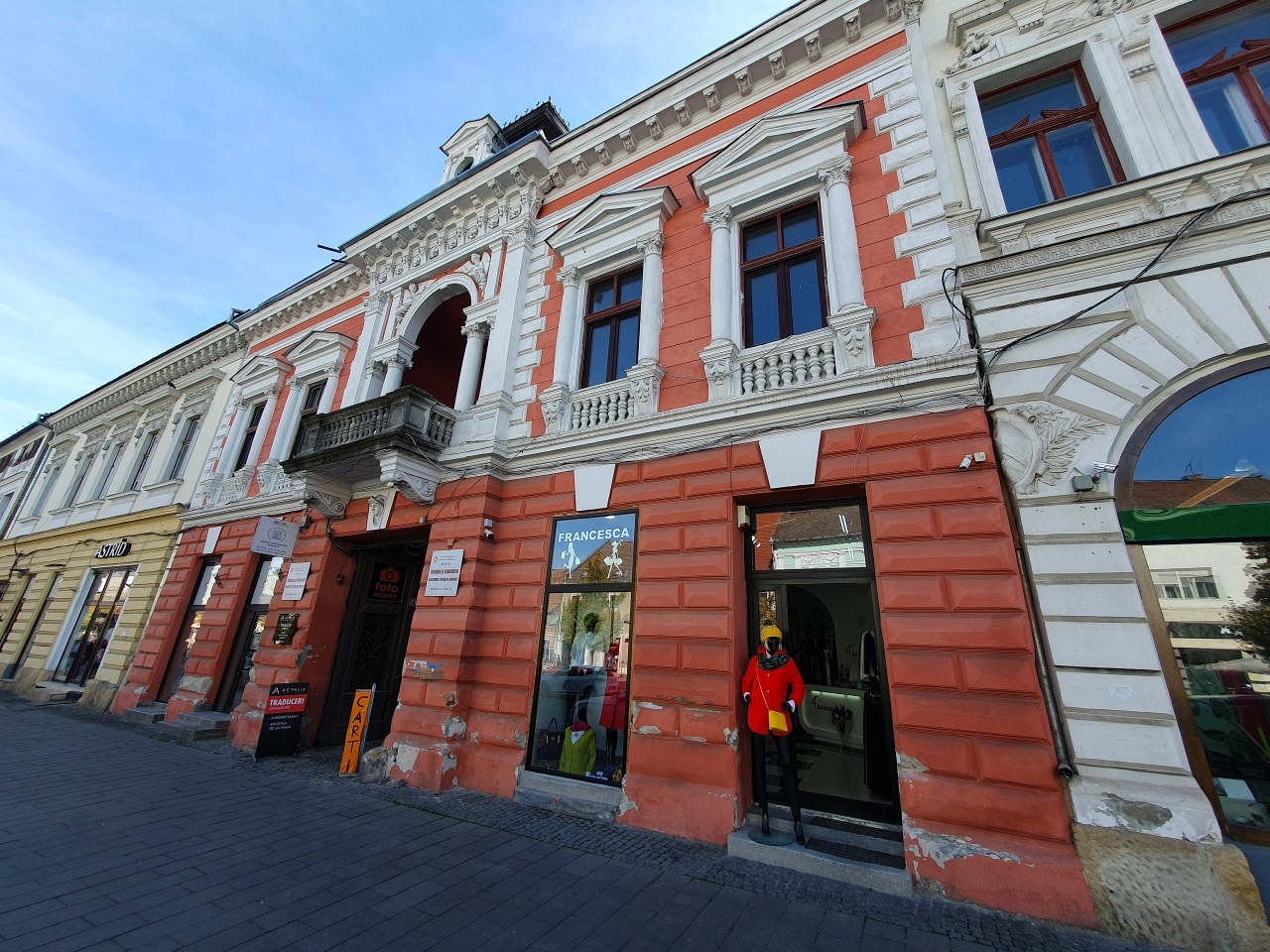
The Csiki House.
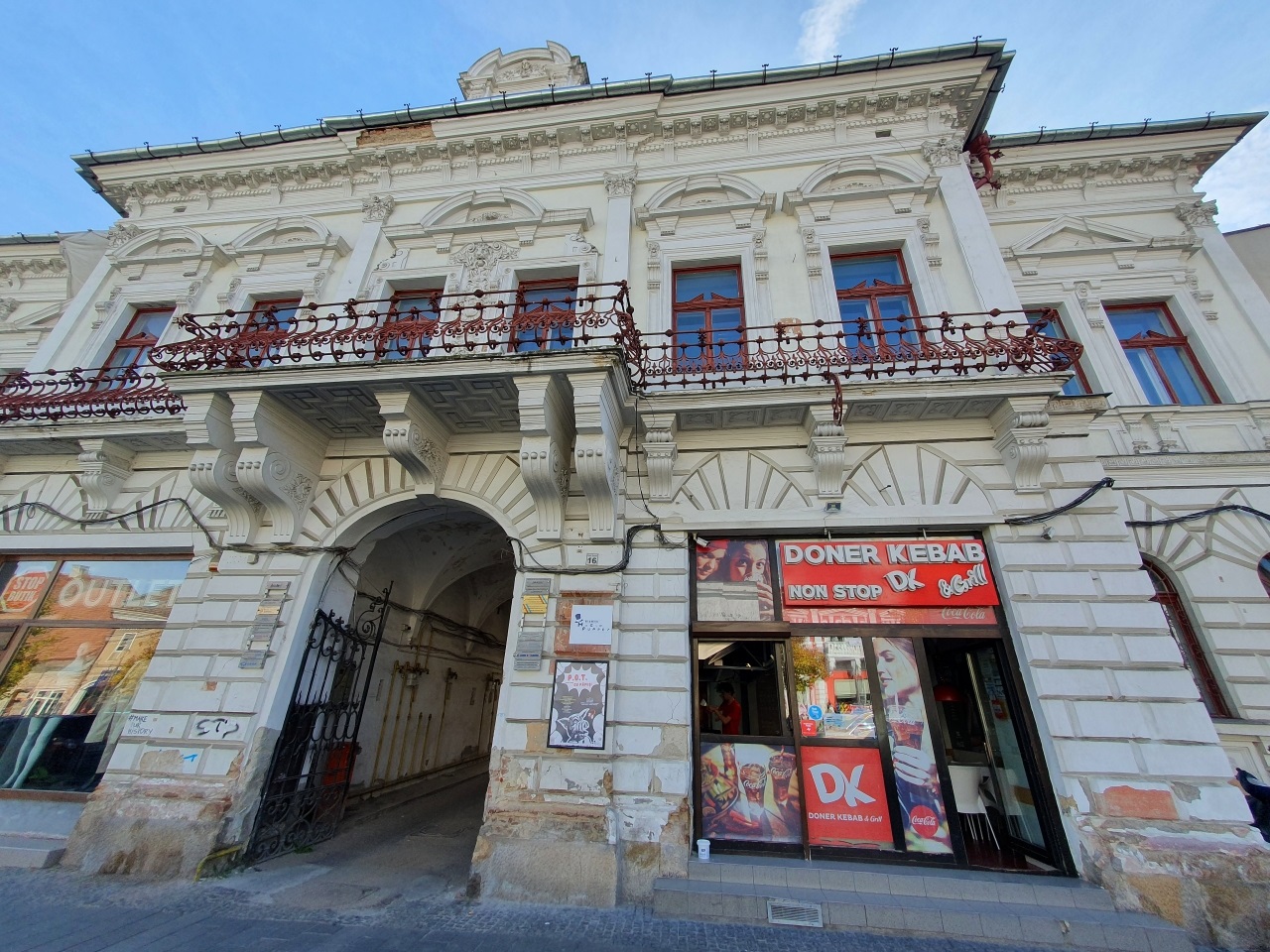
The Magic Puppet Theater hidden somewhere here.
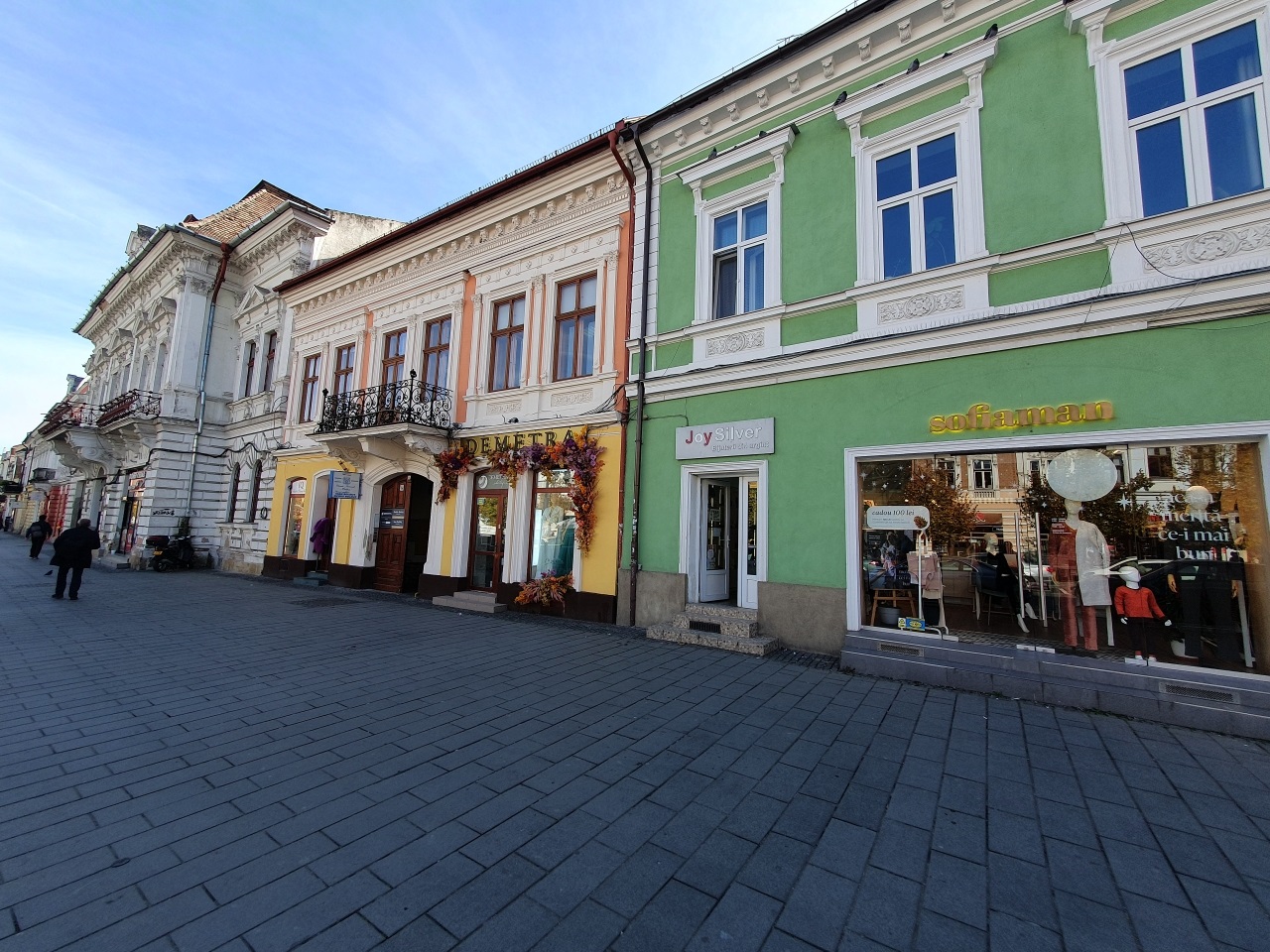
When you see this kind of buildings, you know you are in the Austro-Hungarian Transylvania…
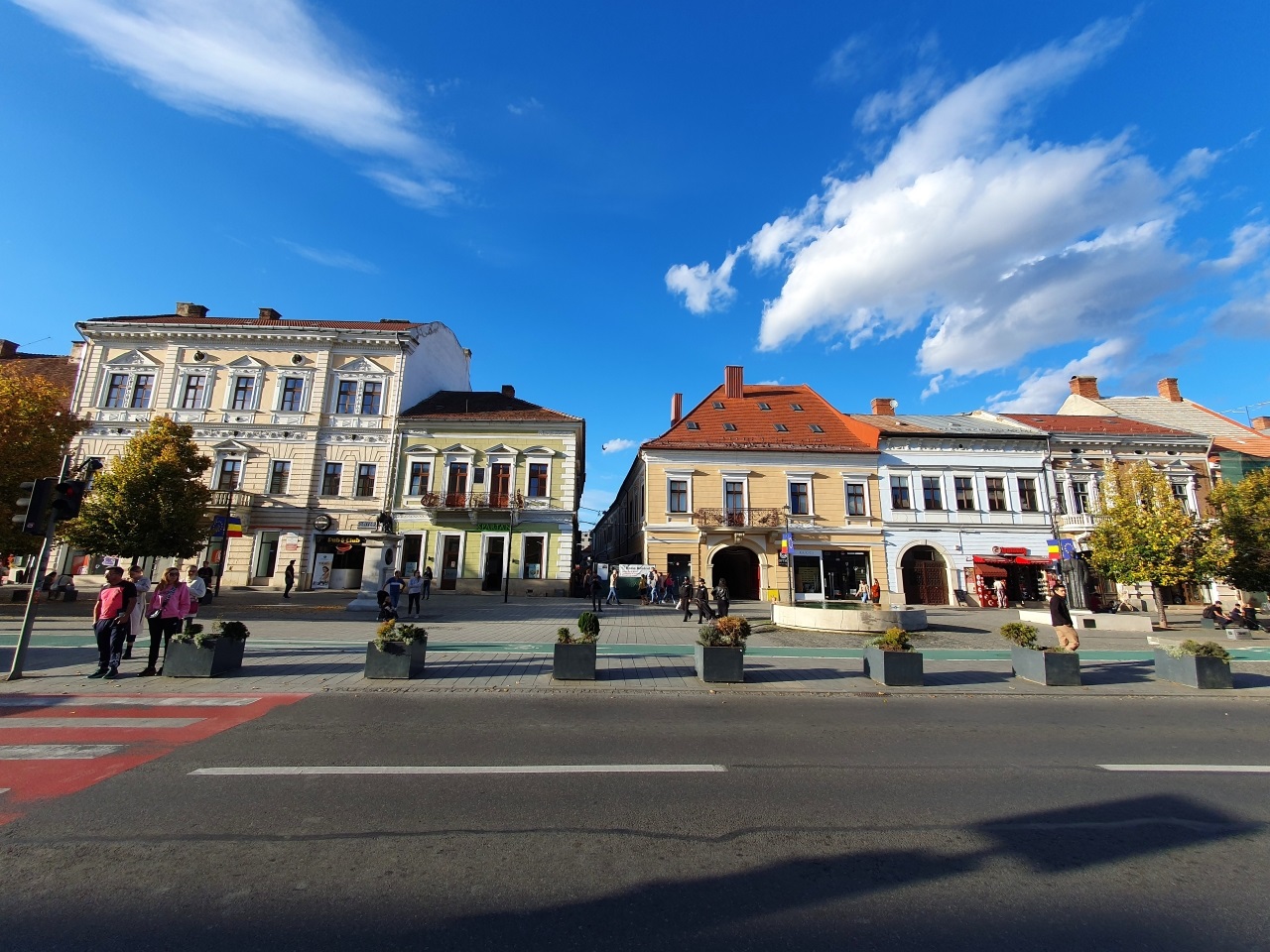
Across the street, from right to left, the Lath House, the Deák House, then the gap of Bolyai street and then, the second house from left to right is the birthplace of János Bolyai (born in 1802), the famous Hungarian mathematician who gave his name to the University of Cluj. Actually, the University of Cluj is called Babes-Bolyai, yet another proof of the continuous difficulties between the Romanian and Hungarian communities (Victor Babeș was a famous Romanian physician and internationally recognized microbiologist, born in… well… Vienna). In front of the Bolyai House and in the middle of the Eroilor street there is the Capitoline Wolf Statue (Lupa Capitolina statue).
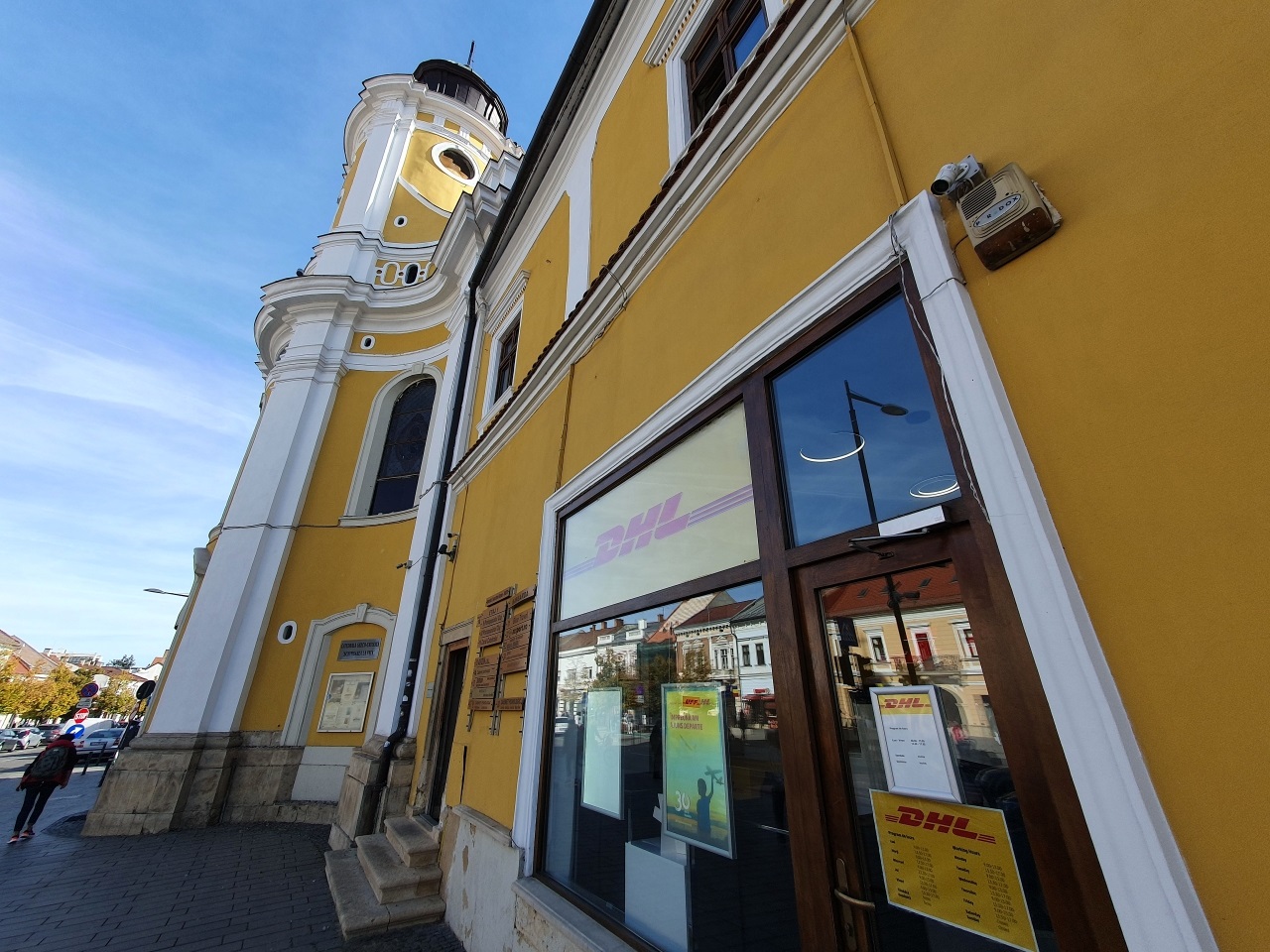
The same buildings mirrored in the windows of the DHL courier services, located “since forever” next to the Greek-Catholic Cathedral.
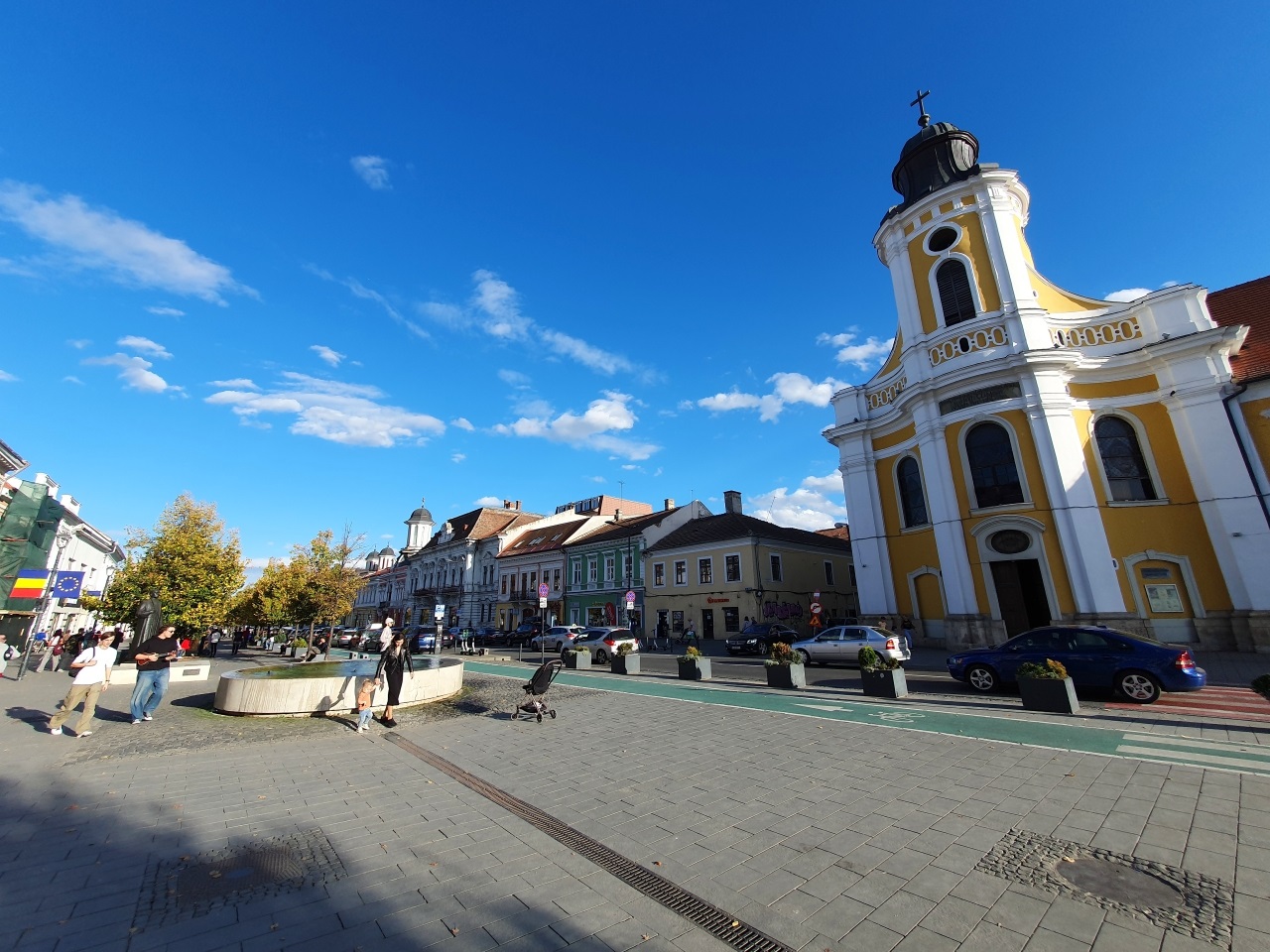
The Transfiguration Greek Catholic Cathedral, built in 1778 as part of the Henter House, was initially a Minorite Church. It was ceded to the Greek Catholic Church in 1924, who used it as an episcopal cathedral from 1930. In 1948, it was forcibly taken from them and given to the Orthodox Church, from whom it taken back in 1998, after a long legal battle.
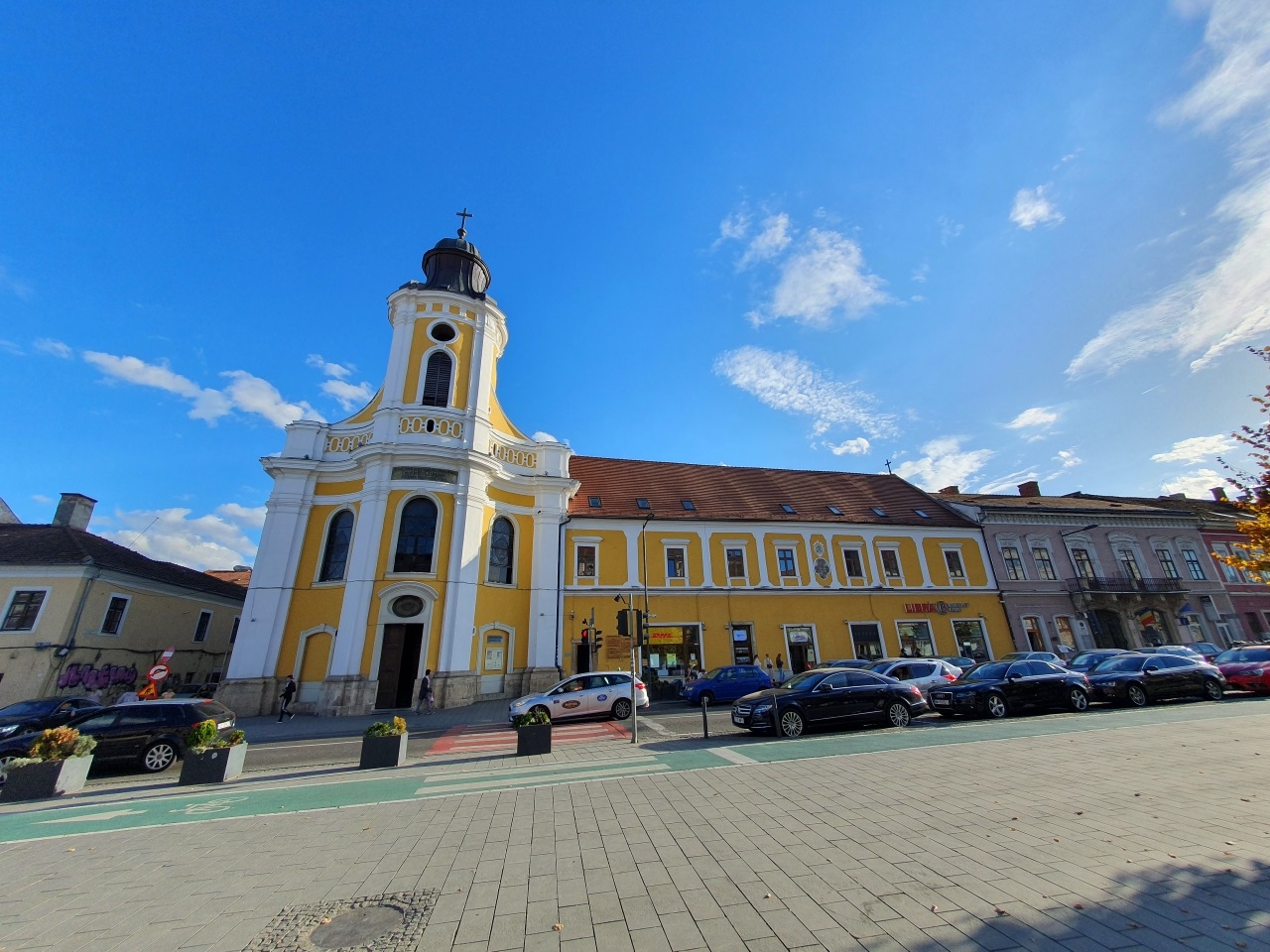
Truth to be told, Transylvania was a disputed land not only from an ethnic and linguistic perspective, but also from a religious viewpoint… Anyway, the grey building to the right hosts the Tourist Information Center of Cluj… if needed be.
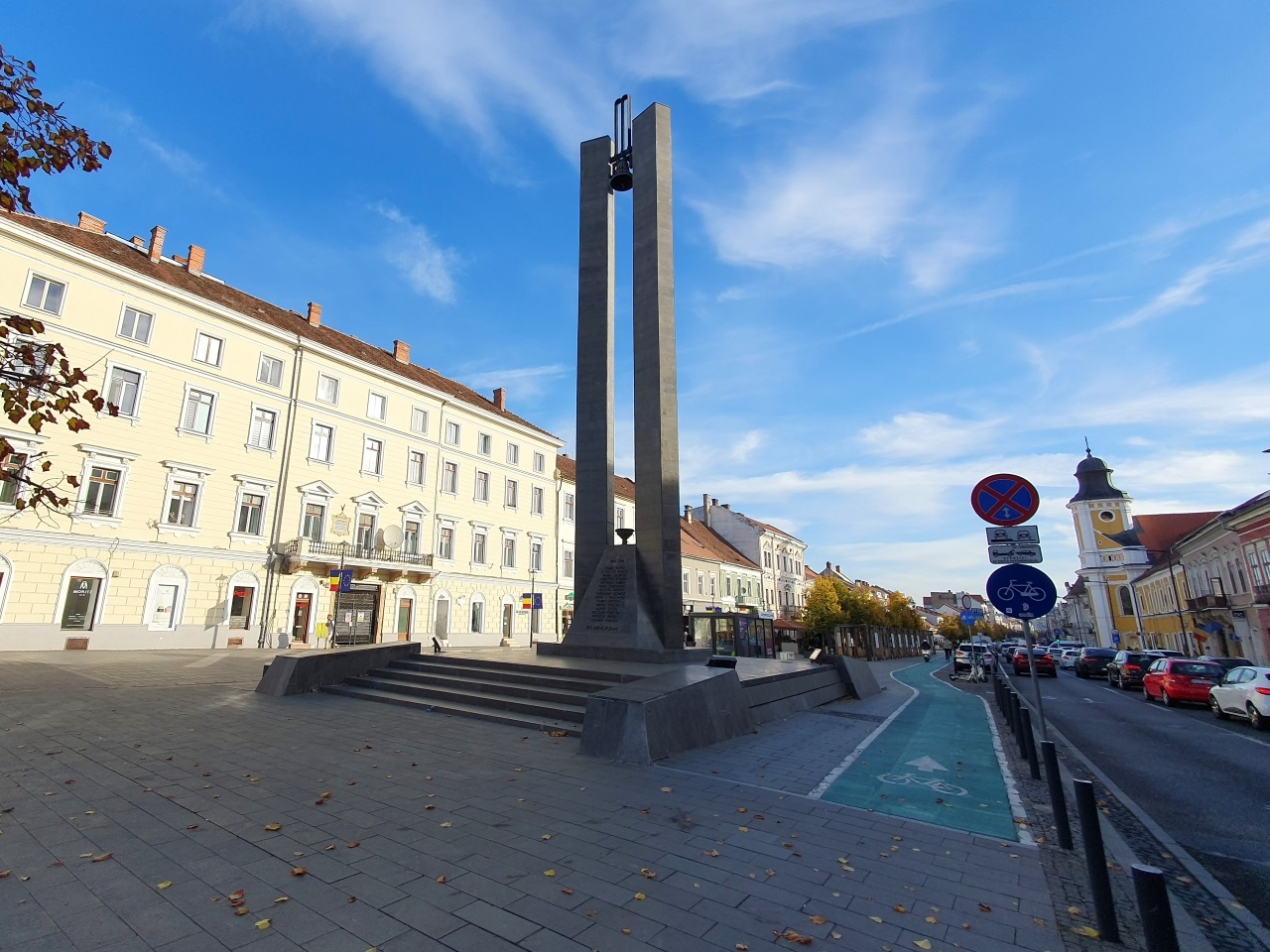
Entering the Unirii Square, we encounter the Monument of the Memorandists (Monumentul Memorandiștilor), built in 1994, also pictured on the coat of arms of Cluj. On exactly the same spot, the Lupa Capitolina Statue used to stay before (a statue which also used to be in the middle of Unirii Square in 1921, when it was received as a gift from Italy). To complicate things more, on the same place there used to be in 1945 the Sentinel of the Carpathians Statue, a subject of dispute between Hungarians and Romanians. The Sentinel was subsequently destroyed. To the left of the image there’s the Pataki–Teleki House, built around 1790, home to theatrical performances among other destinations.
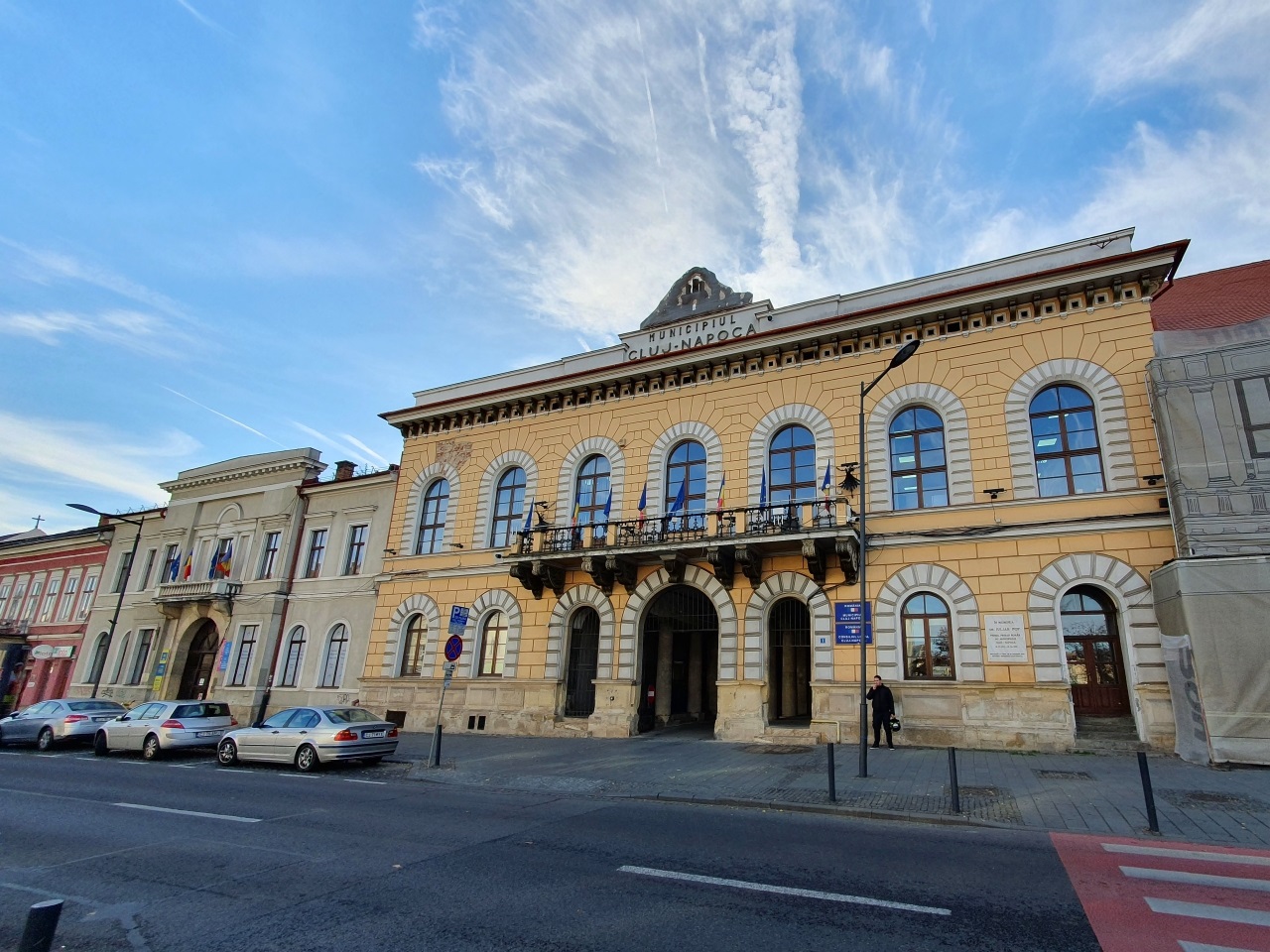
Across the palace is the Old Town Hall, the town’s first town hall, already mentioned in 1537 as a council house. Now it appears to host the Cluj City Hall Taxation Service. It forms the south-eastern corner of Unirii Square (the main square). And here we end our journey for now.
Cluj-Napoca – Inside the Walls
